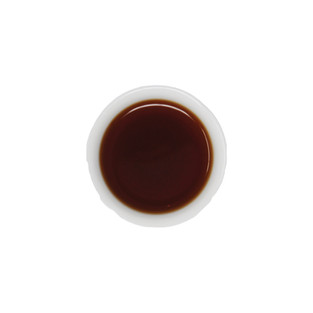Introduction to Pu-erh Tea
- Boon Tea
- Jun 2, 2020
- 5 min read
What is aged tea and why is it so expensive? The world of puerh teas is one steeped in mystery. It does not help with its case either that many farmers and producers of puerh teas in the Yunnan region of China adds to this notion of confusion with their own practice and individual craftsmanship. What does it mean to “age” the tea? Why is some company selling a tea cake from ten years ago at the price of $1,500 per piece? Below, we will attempt to decipher what happens to the puerh tea during the aging process, introduce the types of puerh teas, and share some interesting facts to better assist you in understanding this fascinating tea and perhaps very soon, learn to appreciate its unique character.

HISTORY
The name “puerh” came from the city of Puerh in the Yunnan province of China. Historically, this city is where all the teas was gathered from the tea mountains of the province and was then transported via the Old Horse Trade Road to various cities for commerce. This is one of the main reasons why producers eventually developed pressed form of just processed puerh tea leaves (the most common being cake form but there are various shapes available now), and wrapped them in cotton paper and sometimes bounded them in stacks with bamboo for ease of transport.
PRODUCTION STYLE
Puerh is one of the most well-known dark teas, which is a category of tea that suggests an over-oxidation and further processing of the spring harvest tea leaves to produce a “fermented” tea that yields a deep and complex brew. Many of the tea leaves harvested to produce puerh teas came from leaves of tea trees that are deemed at least a few hundred years old and is part of the big leaf varietal, which has an elongated and define leaf shape. There are two types of puerh tea: raw and ripe.

Raw
This is the most traditional and rawest form of puerh tea, sometimes known as maocha, or rough tea. It is processed similarly to a green tea, where the farmers will pluck the tea leaves and then process them through various stages of drying and roasting. The amount of drying and roasting is adjusted to ensure that a small number of enzymes remain intact within the tea leaves to allow further fermentation to occur naturally over time. In its loose-leaf form, raw puerh matures faster than in its pressed form, allowing quicker access and enjoyment in just two to three years of aging. As the amount of authentic tea leaves from sought-after mountain regions is very limited, raw puerh teas are often bought in the year of its harvest at a premium price-point and then stored to allow the aging process to occur.
Ripe
A much later invention than its predecessor, ripened puerh teas is produced by taking the rough tea and then further processing it through the manipulation of its environment in terms of humidity and temperature, which is called the piling process. The ripe puerh is created with the purpose to expedite the aging process which occurs naturally over time in its raw form, allowing its patrons the luxury to enjoy an “aged” cup of puerh tea without waiting decades for it to reach this state of maturity. Because of its piling process and the producers’ fondness to create consistent flavors signature to them, ripe puerh teas are often a blend of high-quality tea leaves from different regions.
Image 1. Left: ripe puerh tea cake. Right: raw puerh tea cake.
CHARACTERISTICS
The aging process of puerh teas offers a smoother and more complex flavor that is often overshadowed by the “freshness” from its initial harvest. However, it is important to know that there is a prime time to enjoy each of the two types of puerh tea.
Raw
Since this is puerh tea in its most rudimentary form, the raw puerh often has the highest investment value because of how versatile and diverse in flavor it could become. Its initial flavors consist of floral notes with ample of grape-like aroma that resembles a delicate glass of chardonnay. With time, its delicacy will slowly evolve and mature to give a deeper and earthier tone with a smoother texture and sweet after taste. Raw puerh tea is often sold at a much higher price point than its ripe counter part due to its ability to evolve and mature over time, with practically no expiration date. Connoisseurs often purchase more than one tea cake each year so that they can keep one stored for aging purposes (this can be achieved simply by storing the cake in loose packaging in a dark, cool place to ensure only a minimum amount of moisture and air could reach the tea leaves), while having another tea cake that they can open throughout the years to enjoy and taste the difference. Since raw puerh is very versatile, its optimal time for tasting varies according to personal taste, but it is generally recommended that the tasting occurs after two to threes years from its date of production to ensure that the “roughness” of the tea has already been smoothed over.
Within our collection, we are offering the Wild Doe, Silk Road, and Queen Bee (coming soon!) for your consideration. We suggest starting from Wild Doe if you are new to raw puerh as it yields a very smooth and delicately floral cup of golden delight. Silk Road is our latest find and has a slightly more complex flavor with ample of room for aging. As for the crown jewel Queen Bee, which is a member of our Bloom Label collection, this marvelous raw puerh was harvested from the prestigious mountain region of Yiwu in spring 2020, and we will be offering it across three forms for the greatest convenience and enjoyment: loose, cake, and ball.
Ripe
This puerh tea offers a completely different experience than its raw form. Because of the heat and moisture applied to the rough tea during its production process, ripe puerh tea often has a flavor profile of heightened earthiness and woody sweetness that some might find say it resembles a medicinal and mossy aroma. However, with every infusion and as its aging process continues, that potent earthiness will gently subside to yield a much more layered flavor with its signature woodiness and a sweet date finish.
We offer ripe puerh in two tea cake form (Dark Stag and Everlasting) and a “loose-leaf” that are clusters formed naturally during the piling process, which we named Old Dome. We suggest Old Dome as an introduction to ripe puerh teas because of its convenient cluster form. Dark Stag produces all the distinctive characteristics of a ripe puerh, with a tantalizing finish. And as for Everlasting, a member of our Bloom Label collection and was produced in 2015, this premium tea offers the most diverse flavors that could only be produced through several years of aging. It has been inferred by tea masters and experts alike that the prime time to enjoy a high quality ripe puerh is between eight to ten years of aging.
**Please note that this information is what we have gathered during our sourcing trips and learned from the expertise of tea craftsmen and trade books over the years. It is for your reference only as we always encourage a personal approach when it comes to tea tasting. However, if you are looking for specific brewing instructions that we have formulated through many rounds of trial and error, please refer to each tea’s product page.**
###




















Your comparison of Pu-erh's aging process to that of a fine wine is spot on. It's a complex craft, and the variance in quality based on fermentation techniques can be staggering. This is a crucial consideration for enthusiasts, but it presents an even bigger challenge for businesses like cafes or specialty shops that need to source authentic, high-quality tea consistently. For those navigating this supply chain, having a direct line for premium Pu Erh cake for bulk purchase inquiries can be the key to ensuring both quality and reliability for their customers.